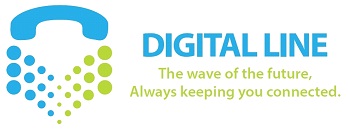Your company’s communication facilities support your LAN, WLAN, ASDL, and ISDN, which makes it important to your operations. A properly designed organized cabling system executes dependably and offers you the flexibility to conveniently include, relocate, and change devices when you require to.
What is Structured Cabling?
Structured cabling is a complete cabling and hardware framework used in telecommunications. The term “structured cabling” describes a number of standard smaller elements called subsystems.
Organized cabling systems sustain numerous hardware uses to suit your business’s present and future needs.
Structured Cabling Basics
This cabling style and installation are assisted by a set of criteria that define circuitry campuses, data facilities, offices, and apartment buildings for information or voice communications. These criteria make certain your cabling systems are consistent and comply with physical and transmission line needs.
As we mentioned, there are six subsystems in organized cabling:
- Entryway centers: the point where the phone company network ends and connects with the consumer’s on-premises wiring.
- Work-area parts: connect end-user tools to the horizontal cabling system’s electrical outlets.
- Equipment areas: hold equipment and electrical wiring consolidation factors that serves users. These are in the building or at the university.
- Telecommunications rooms: in some cases called telecommunications enclosures, these link between the backbone cabling and horizontal cabling.
- Backbone cabling: the inter-building and intra-building wire links between entryway facilities, equipment areas and telecoms storage rooms. Backbone cabling is mostly utilized in data centers.
- Horizontal cabling: can be common inside electrical wiring (IW) or plenum cabling and also attaches telecoms spaces to specific electrical outlets or work areas on the flooring.
While every organized cabling system is unique, they all have one thing in common and this is “organization.” Organization is as a lot a part of structured cabling as the cables themselves.
Benefits of Structured Cabling Equipment
There are lots of benefits that make organized cabling unique from various other cabling systems. Here are some to name a few:
- Much less prospective for downtime: structured cabling is very arranged, hence, capacity for human error is minimized.
- Aesthetics: organization makes structured cabling system look much cleaner than point-to-point method circuitry.
- Saves time: tracing cords and also ports is a lot easier task with a structured cabling system.
Contact Digital Line if you need help with your cabling system. We are a network cabling specialist who provides cabling solutions in Toronto and Surrounding GTA.

